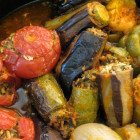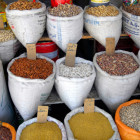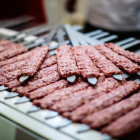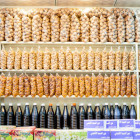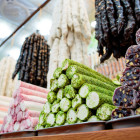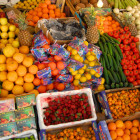How to make #Kofta 🍽️#Newroz is just around the corner and with #COVID19 outside, we suggest you stay at home and cook yourself a traditional #Kurdish treat 👇 #KurdishHistoryMonth ❤️🔆💚 pic.twitter.com/ARZvUVnbKM
— KRG Austria (@KRG_Austria) March 19, 2020
Fresh salads, grilled meat and home-made bread – delicious Kurdish cuisine always has travellers relishing for more. Eating is an important part of Kurdish social life. It is during meals that the Kurdish people share stories and bond with family and friends. Once you become familiar with Kurdish cuisine, you will quickly notice that many dishes are a mixture of different influences from the Mediterranean area and the Middle East.
Traditionally, there was no distinction between starters, side dishes and main dishes; all were served at the same time. Today, however, menus in many restaurants of the Kurdistan Region-Iraq will separate dishes in starters, main courses and desserts.
The classic Kurdish beverage is black tea, ‘chai’, which is served after food and when welcoming guests. Other popular drinks include freshly made pomegranate, cantaloupe, orange or banana juice. During meals, people often will often drink ‘mastew’, a diluted yoghurt beverage.
Breakfast
The Region produces a number of dairy products made from sheep’s, goat’s or cow’s milk. Examples include various types of soft and hard cheeses as well as yoghurt. People also love to have fresh bread with comb honey from the local Kurdish mountains and fresh organic eggs. Breakfast is always served with a cup of black tea.
Meze
Originally not a part of a traditional Kurdish meal, dinners and lunch are today served with starters, in Kurdish ‘meze’. A popular starter is traditional Mediterranean salad, made of a variation of tomatoes, cucumbers, fresh herbs and topped with either lemon or pomegranate dressing. Other starters include spreads such as ‘humus’, which is made from chick peas and sesame paste, or ‘baba ghanoush’, a yoghurt-based dish of eggplant. During the fall and winter seasons, spicy soups, such as ‘nisk’, made with lentils, are eaten to keep warm.
Meze are usually served with fresh bread, such as flat bread, ‘nany tyry’ or unleavened ‘lewash’ bread which is baked in a brick oven.
Main courses
In Kurdish cuisine, main courses are usually comprised of meat, which is served in a variety of forms. Grilled lamb, chicken or veal are widespread classics. The most popular serving is ‘kebab’, meat skewers made over a flaming grill. Other dishes include ‘kufte’, stuffed pastries made from rice flour that are filled with minced meat and herbs, as well as various stews cooked in tomato sauce with either beans, string beans, zucchini, eggplant or okra.
These are generally served with either rice, bulgur or bread. Rice and bulgur are either fried or simmered in meat broth. A flavourful combination is ‘briyani’, aromatic rice with small pieces of chicken or meat, vegetables, almonds, nuts, raisins and herbs.
A real treat is also ‘dolma’, grape leaves, eggplant, zucchini, tomatoes, onions or peppers stuffed with rice and minced meat. Meat patties, ‘shifte’, enjoy a special preparation in the Kurdistan Region. They are either served as wraps or with a side dish of rice.
Desserts
In decades passed, desserts were not served immediately after the main dish. Instead they were served in the afternoon with a cup of tea. Traditional sweets included home-made cookies and ‘kulicha’, pastries stuffed with dates or walnuts.
This tradition has transformed over the course of time. Kurds will often have fresh fruit, such as pomegranates, figs, oranges, cantaloupes or grapes for dessert, and on special occasions guests will be served exquisite desserts, popular throughout the Middle East. These include ‘baklawa’ made from nuts and honey, and ‘halwa’ made from sesame seeds. A favourite is also ‘kanafeh’, based on cream cheese, and various types of pudding, refined wit
